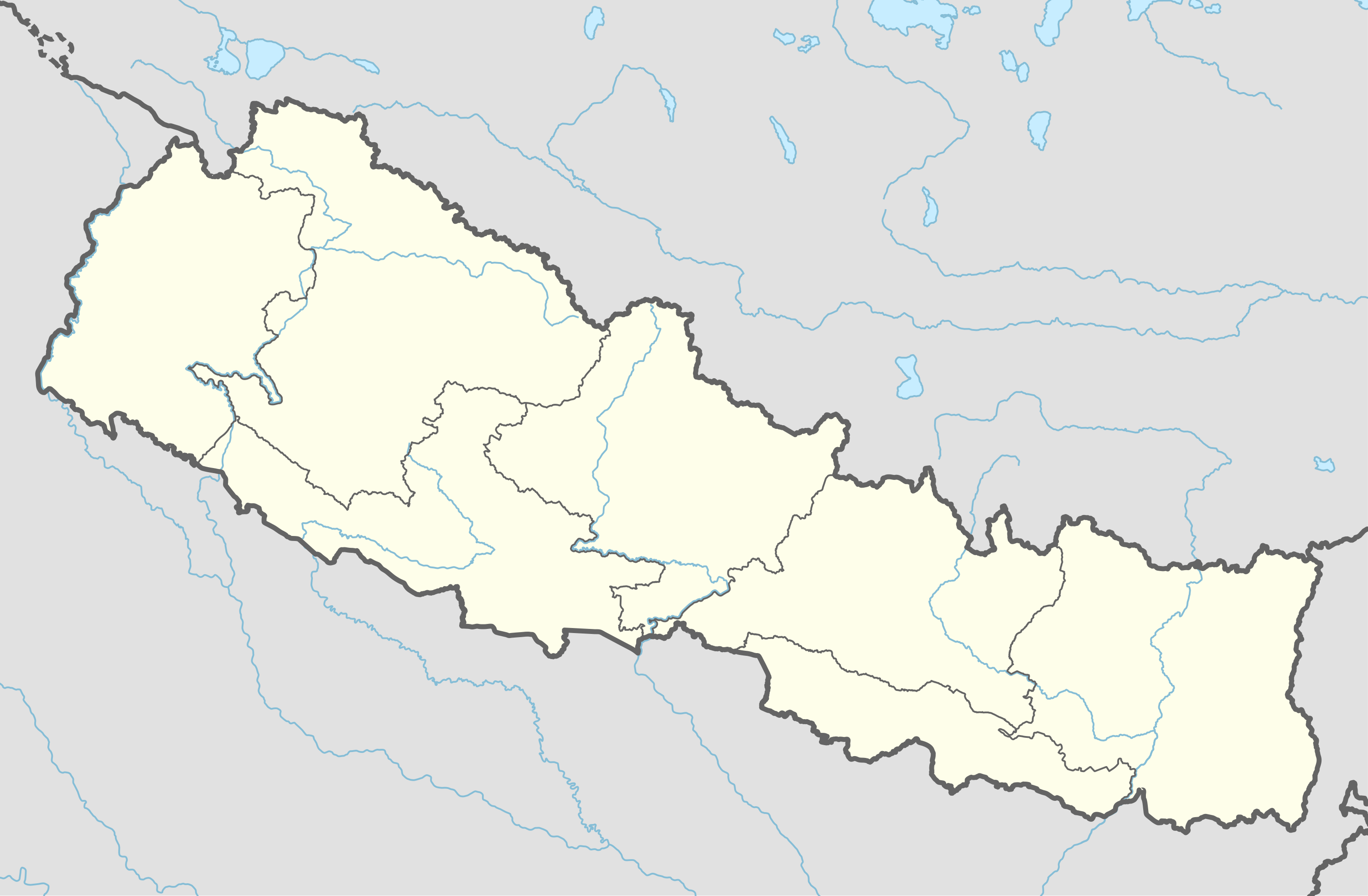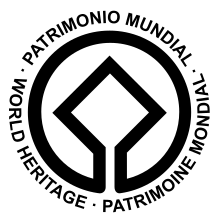List of World Heritage sites in Nepal
The UNESCO (United Nations Educational, Scientific and Cultural Organization) has designated 4 World Heritage sites in Nepal. The first sites from the Country Nepal were the Sagarmatha National Park and Kathmandu Valley.[1] In Nepal, there are 2 cultural and 2 natural mixed sites.[2] Additionally, there are 15 tentative sites proposed by Nepal in UNESCO.[3]
The World Heritage Committee may also specify that a site is endangered, citing "conditions which threaten the very characteristics for which a property was inscribed on the World Heritage List." Two sites in this region are currently listed as endangered.[4]
Legend
The table is sortable by column by clicking on the ![]()
- Site; named after the World Heritage Committee's official designation
- Location; at city, regional, or provincial level and geocoordinates
- Criteria; as defined by the World Heritage Committee
- Area; in hectares and acres. If available, the size of the buffer zone has been noted as well. A value of zero implies that no data has been published by UNESCO
- Year; during which the site was inscribed to the World Heritage List
- Description; brief information about the site, including reasons for qualifying as an endangered site, if applicable
World Heritage sites
| Site | Image | Location | Criteria | Area ha (acre) |
Year | Description | Refs |
|---|---|---|---|---|---|---|---|
| Chitwan National Park | 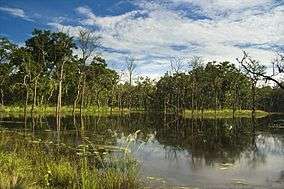 |
Chitwan District, Narayani Zone, 27°30′0″N 84°20′0″E / 27.50000°N 84.33333°E |
Natural: (vii), (ix), (x) |
93,200 (230,000) | 1984 | [5] | |
| Kathmandu Valley |  |
Kathmandu Valley, 27°42′14″N 85°18′31″E / 27.70389°N 85.30861°E |
Cultural: (iii), (iv), (vi) |
167 (410); buffer zone 70 (170) | 1979[nb 1] | The site has been listed as endangered 2003–2007 due to the partial or substantial loss of the traditional elements of six out of seven monument zones and resulting general loss of authenticity and integrity of the whole property. | [6] |
| Lumbini, the Birthplace of the Lord Buddha | 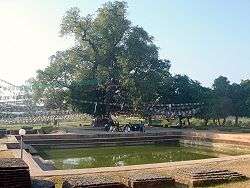 |
Rupandehi District, Lumbini Zone, 27°28′8″N 83°16′34″E / 27.46889°N 83.27611°E |
Cultural: (iii), (vi) |
1.95 (4.8); buffer zone 23 (57) | 1997 | [7] | |
| Sagarmatha National Park | Solukhumbu District, Sagarmatha Zone, 27°57′55″N 86°54′47″E / 27.96528°N 86.91306°E |
Natural: (vii) |
124,400 (307,000) | 1979 | [8] | ||
Tentative list
| Site | Image | Location | Proposed criteria | Year Listed as Tentative Site | Description | Refs |
|---|---|---|---|---|---|---|
| The early medieval architectural complex of Panauti | Kabhrepalanchok District | Cultural | 1996 | The site includes the Indresvar Mahadev temple built in 1294, the Brahmayani temple built in the 17th century, and numerous heritage structures. | [9] | |
| Tilaurakot, the archaeological remains of ancient Shakya Kingdom | Kapilvastu District | Cultural | 1996 | The site is the cardinal point of the ancient Shakyan city of Kapilavastu, where Gautama Buddha spent 29 years of his lifetime. | [10] | |
| Cave architecture of Muktinath Valley of Mustang | 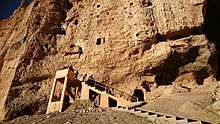 |
Mustang District | Cultural | 1996 | Originally used as burial chambers in 1000 AD, the caves eventually became meditation chambers, military lookouts, or storage units up to the 14th century as part of the Kingdom of Lo. | [11] |
| The medieval palace complex of Gorkha | Gorkha District | Cultural | 1996 | The site includes the medieval palace and cave of Gorakhnath, Kalika temple and other monuments. | [12] | |
| Ramagrama, the relic stupa of Lord Buddha | Nawalparasi District | Cultural | 1996 | The site includes the only undisturbed original stupa containing relics of Buddha, which was built in the 6th century BC. | [13] | |
| Khokana, the vernacular village and its mustard-oil seed industrial heritage |  |
Lalitpur District | Cultural | 1996 | The site includes a system of drainage and chowks, traditional houses, chaityas, a mother deity temple, and its mustard fields and processing sites. | [14] |
| Medieval Earthen Walled City of Lo Manthang | 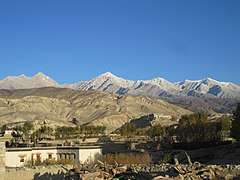 |
Mustang District | Cultural | 2008 | The walled city was the capital of the Kingdom of Lo in the 15th century. Notable monuments include the palace and monasteries of Jampa Lakhang and Thupchen Lakhang from the 15th century and the monastery of Choede Lakhang from the 18th century. | [15] |
| Vajrayogini and early settlement of Sankhu | Kathmandu District | Cultural | 2008 | The site includes the Lichchhavi period (2nd to 9th century AD) settlement of Sankhu and the Vajrayogini temple complex constructed in the mid 17th century. | [16] | |
| Medieval Settlement of Kirtipur |  |
Kathmandu District | Cultural | 2008 | The site includes the Newar monuments of Chilancho Vihar, Jagat Pal Vihar, Buddha Dharma Sangha Shikhara, Baghbhairab Temple, Vath (Layaku), Umamaheshvar Temple, Indrayani Pith, Chitu Bahail, Lokeshwar Shikhara, Buddha Temple, Chve Bahal and Kwe Bahal. | [17] |
| Rishikesh Complex of Ruru Kshetra | Palpa District | Cultural | 2008 | The site includes an ancient route and cremation site between Muktinath and Damodar Kunda, the settlement of Ridi, and the entire complex. | [18] | |
| Nuwakot Palace Complex |  |
Nuwakot District | Cultural | 2008 | The site includes Nuwakot Palace and various temples and shrines, such as Bhairab Temple. | [19] |
| Ram Janaki Temple | Dhanusa District | Cultural | 2008 | The site is composed of classical and neo-classical designs with elements of fortification. | [20] | |
| The Medieval Town of Tansen | 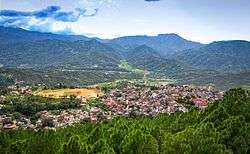 |
Palpa District | Cultural | 2008 | The site includes Bhairab Temple, the Purankot Durbar, the Srinagar Durbar (Fort), the Bansha Gopal, the Mukundeshwar Mahadev, the Amar Narayan Temple, the Ran-Ujjeshwari Bhagawati Temple and the Tansen Durbar. | [21] |
| Sinja Valley | Jumla District | Cultural | 2008 | The site includes the capital of the Khasas kingdom from the 12th to 14th centuries. | [22] | |
| Bhurti Temple Complex of Dailekh | Dailekh District | Cultural | 2008 | The site includes 22 monuments constructed through the Western Malla architectural style. | [23] |
Notes
- ↑ Minor modification of boundaries in 2006.
References
- ↑ "Number of World Heritage properties inscribed each Year". UNESCO. Retrieved 8 September 2011.
- ↑ "Nepal - UNESCO World Heritage Centre". UNESCO. Retrieved 6 November 2016.
- ↑ https://whc.unesco.org/en/statesparties/np
- ↑ "World Heritage in Danger". UNESCO. Retrieved 28 May 2010.
- ↑ "Chitwan National Park". UNESCO. Retrieved 28 May 2010.
- ↑ "Kathmandu Valley". UNESCO. Retrieved 28 May 2010.
- ↑ "Lumbini, the Birthplace of the Lord Buddha". UNESCO. Retrieved 28 May 2010.
- ↑ "Sagarmatha National Park". UNESCO. Retrieved 28 May 2010.
- ↑ https://whc.unesco.org/en/tentativelists/839/
- ↑ https://whc.unesco.org/en/tentativelists/840/
- ↑ https://whc.unesco.org/en/tentativelists/841/
- ↑ https://whc.unesco.org/en/tentativelists/842/
- ↑ https://whc.unesco.org/en/tentativelists/843/
- ↑ https://whc.unesco.org/en/tentativelists/844/
- ↑ https://whc.unesco.org/en/tentativelists/5256/
- ↑ https://whc.unesco.org/en/tentativelists/5257/
- ↑ https://whc.unesco.org/en/tentativelists/5258/
- ↑ https://whc.unesco.org/en/tentativelists/5259/
- ↑ https://whc.unesco.org/en/tentativelists/5260/
- ↑ https://whc.unesco.org/en/tentativelists/5261/
- ↑ https://whc.unesco.org/en/tentativelists/5262/
- ↑ https://whc.unesco.org/en/tentativelists/5263/
- ↑ https://whc.unesco.org/en/tentativelists/5264/
- "World Heritage Committee: Twenty-fourth session" (PDF). UNESCO. Retrieved 26 June 2011.
- "World Heritage Committee: Twenty-seventh session" (PDF). UNESCO. Retrieved 26 June 2011.
